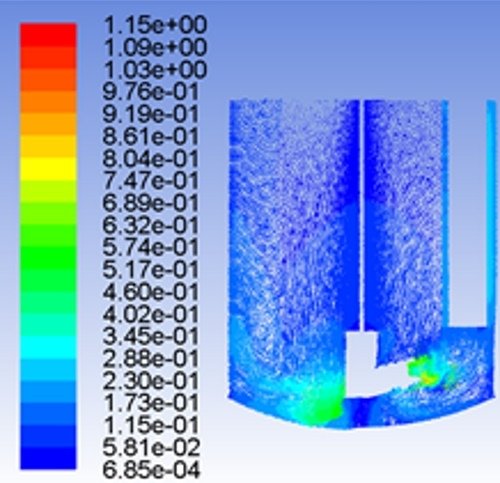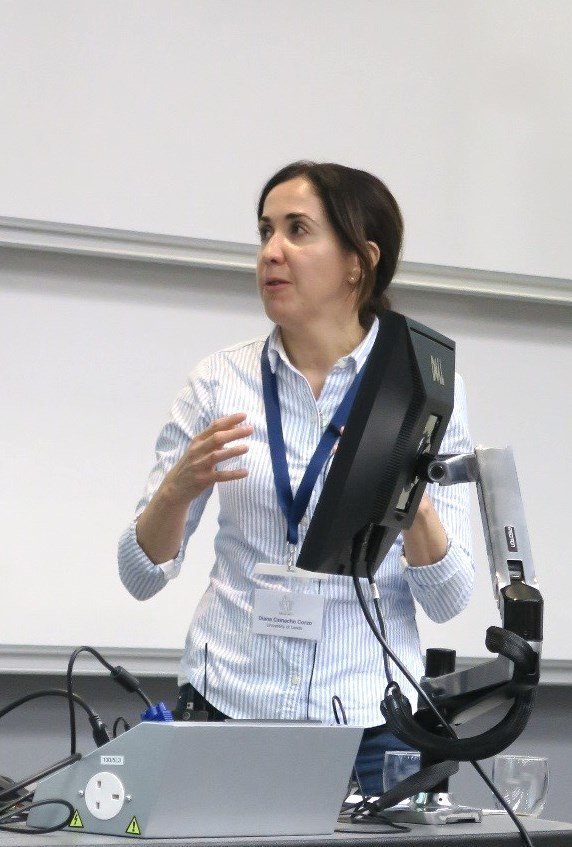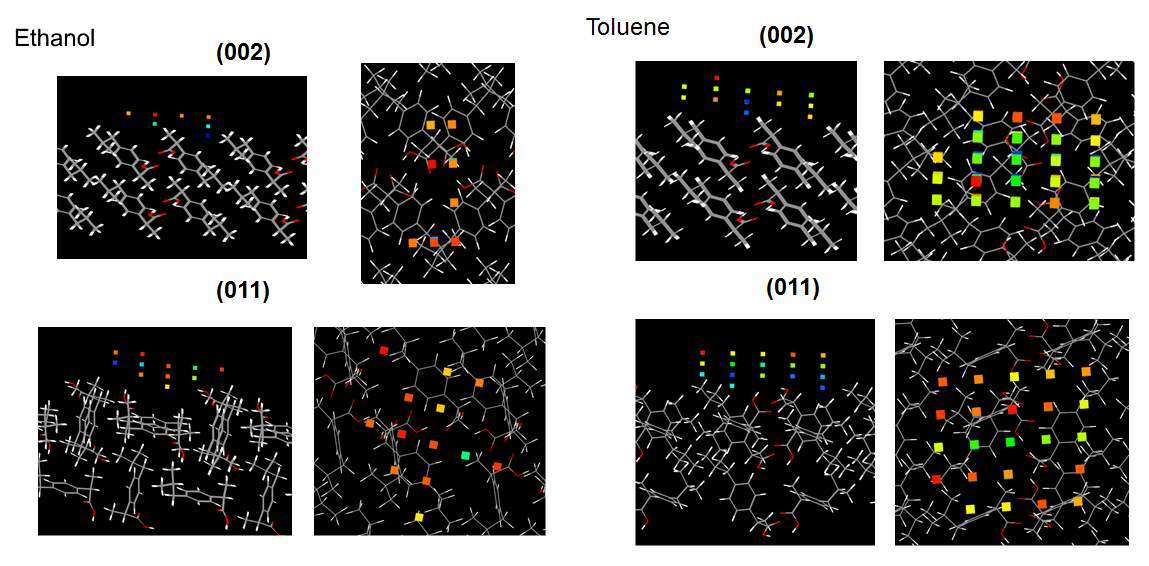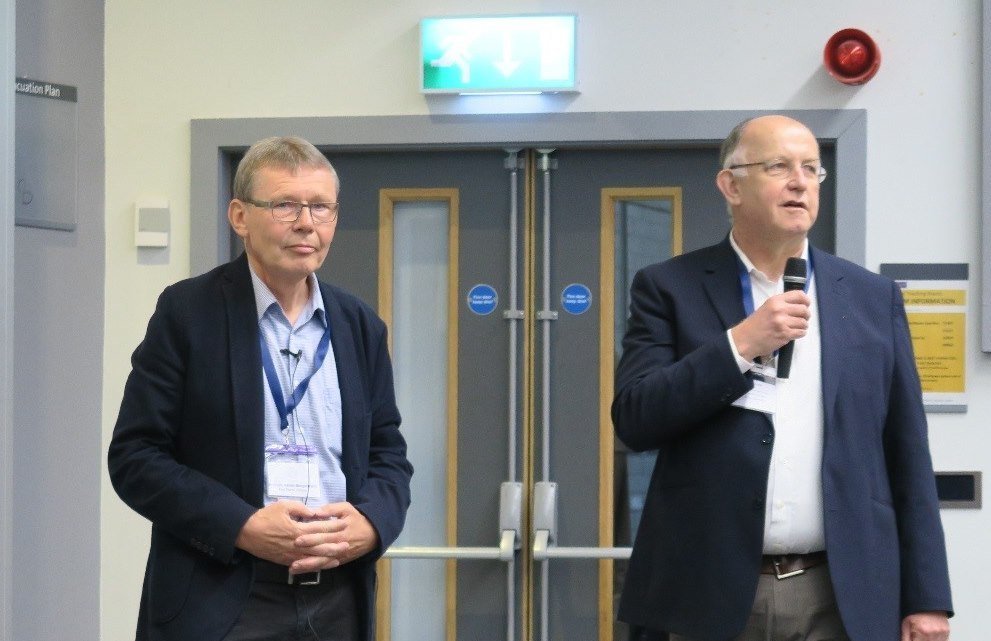ADDoPT crystallisation researchers provide strong presence at BACG Annual Conference

One hundred and twenty researchers from the UK, Europe and beyond involved in theoretical and experimental aspects of crystallisation convened at the British Association of Crystal Growth (BACG) annual conference, held at the University of Manchester from the 27th-30th of June 2017. Seven members of the ADDoPT team from the University of Leeds crossed the Pennines to promote the good work being done within the project, and its importance within the crystallisation community.
Despite the name of the organising body, this annual gathering showcases all aspects of crystallisation, not just crystal growth. Much of the work presented related to the types of organic crystalline materials typically used as active pharmaceutical ingredients (APIs), and this was reflected in the attendance with representation from other significant pharmaceutical research projects including Ireland’s ‘Solid-State Pharmaceutical Cluster’ and the UK’s ‘Centre for Innovative Manufacturing in Continuous Manufacturing and Crystallisation’ ( CMAC – also an ADDoPT consortium member through the University of Strathclyde). This year, there was also a notable increase in the amount of molecular and engineering modelling work presented, reflecting the rising importance of computational modelling in the field of organic molecule crystallisation.
ADDoPT Impact
"Strong interest in the program, demonstrating the need within the community for user friendly simulation tools to assist with ... producing high quality crystalline materials"

The ADDoPT team showcased the progress made so far with two oral presentations and eight poster presentations. From the engineering modelling of crystallisation perspective, Diana Camacho Corzo’s oral presentation (arising from ADDoPT Work Package 4.3) focussed on preliminary results on predicting the particle size distribution (PSD) from a batch solution crystallisation reactor, using a coupled Computational Fluid Dynamics (CFD) and population balance approach. The presentation, delivered in the context of a session on Process Modelling and Control, was well received and prompted audience interest on how the development of this methodology suits within a general framework for modelling crystallisation processes, as well as how the specific models and parameters estimation methods were used for establishing nucleation and crystal growth rates.
From the atomistic and molecular modelling perspective, Ian Rosbottom’s (WP 4.2) presentation showed how an understanding of the molecular surface chemistry of RS-ibuprofen could be related to the crystal morphology produced from different solvents. This presentation provided a good example of the simulations that can be carried out within the VisualHabit program being developed under ADDoPT. VisualHabit builds on the power of the CCDC Mercury crystal structure platform, providing a highly visual and graphical interaction with the underlying computational engine and enabling highly interactive and exploratory crystal analysis, habit prediction, and bulk and surface synthonic analysis. Ian’s talk and associated posters resulted in strong interest in the program, demonstrating the need within the community for user friendly simulation tools to assist with identifying the optimal experimental parameters to produce high quality crystalline materials.

"SystSearch" modelling of crystal capping and side face interactions with different solvents can help elucidate the very different crystal forms observed in practice
Other Conference Highlights
"Compelling lessons learnt...the importance of exploring and understanding crystallisation as chemical reaction engineering"
The participants at BACG this year were treated to a glimpse into current pharmaceutical industrial practices. A particular highlight was GSK’s Elaine Smith describing how process analytical technology (PAT) tools can be used to improve an API’s crystalline physical properties, along with the challenges companies face when difficult to crystallise materials oil out. The industrial theme continued into the core BACG Annual Lecture, delivered by Susan Reutzal-Edens, on how Eli Lilly uses a theoretical computational tool box for analysing the solid-state structure of APIs and relating these structures to API stability.
At the experimental end of the spectrum, nucleation and control of polymorphism at the nanoscale featured prominently. This included work from Faduma Maddar (University of Warwick) on crystallising in nanopipettes under electrochemical control, which led to the stable and reliable crystallisation of the metastable polymorph of the cancer drug bicalutamide. Alternatively, Vijay Srirambhata (University of Strathclyde) displayed how the use of computational tools and templating methods could direct the self-assembly of cyheptamide to crystallise novel polymorphic forms of the material with a high degree of control.

In a compelling “Lessons Learnt” session, some of the most experienced academics in crystallisation presented key ideas that have been worked on by the crystallisation community for a number of years. Interesting insights were discussed, including the importance of exploring and understanding crystallisation as chemical reaction engineering, and the importance of quantifying the role of secondary nucleation in process crystallisation engineering.
A slight departure from the pharmaceutical world came from the energetic Marco Mazotti (UTH-Zurich), who provided a valuable reminder of the wider world challenge of reducing CO2 emissions in the atmosphere, and how the control over the crystallisation of hydromagnesite could be used to improve adsorption based CO2 capture. This presentation resonated well with the conference organisers’ decision to make this the first paperless BACG, saving on thousands of printed pages and pointing towards a greener future for the BACG!
ADDoPTing the Approach?
"A grand challenge which ADDoPT is well-positioned to address"
The importance of the ADDoPT project within the crystallisation community is becoming clear, with high levels of interest in the presentations and posters delivered at the BACG, along with the shift in the broader community towards increased effort on molecular modelling approaches for producing crystalline materials with improved physical properties. Whilst combining molecular and engineering modelling for crystallisation and unit processing of API crystals is still perhaps a grand challenge, it is one which we believe the ADDoPT project is well-positioned to address through its wide range of expertise and collaborative ethos.
To find out more about ongoing research into crystallisation modelling in ADDoPT feel free to contact Ian Rosbottom or Diana Camacho Corzo.